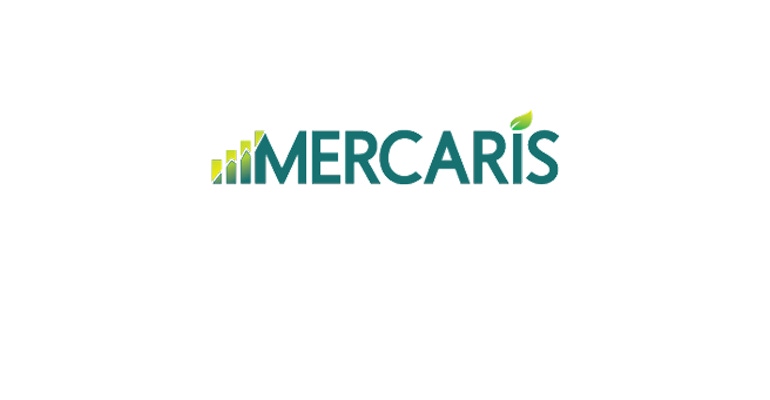A special report from organic market data service and trading platform Mercaris identifies near- and long-term risks for organic commodities as well as potential areas of opportunity.
April 29, 2020

While the current COVID-19 retail environment has given a short-term boost to organic product sales, it’s not clear what the long-term effects on the market will be.
In an effort to find out, Mercaris, the market data service and online trading platform for organic, non-GMO and certified agricultural commodities, released a report examining the risks that the organic market could face in the years ahead. To complement the new report Mercaris hosted an informational webinar led by its director of economics, Ryan Koory.
Koory started off by noting that the current COVID-19 event is one without any kind of historical comparison. From an economic and agricultural perspective, there has never been a situation that has closed down markets, shifted consumer behaviors and worked its way through supply chains and the industry in such a rapid and radical way.
Because the ramifications of COVID-19 are so widespread and fast moving, one of the bedrock questions that we have to ask ourselves, says Koory, is how long does it take for us to get back to normal and what will that normal look like?
“The global spread of COVID-19 has generated a multitude of risks for organic commodity markets,” Koory explains. “With the potential to impact trade, labor, consumer demand and the greater global economy, its ripple effects will likely be widespread and long lasting. Taking stock of these risks is crucial as we look to understand the market in the year to come and navigate this unprecedented event.”
Reviewing COVID-19's impact on field crops and grains
Koory reported that despite bad yields, 2019 achieved good industry growth with 13% more field crop acres, 13% more organic corn farms and 11% more organic soybean farms. Overall there was more corn in supply than anticipated. Organic corn pricing was down slightly as a result, while soybean prices increased slightly.
Because there was increased availability in both commodities total organic imports declined by about 2%. Before even considering COVID-19, more supply becoming available had the potential to weaken prices for both soybeans and corn.
However, looking from April through August 2020, Koory says that the market is not expected to change drastically as fields are planted and forecasts are set so risks throughout the supply chain during this time were assessed as being low.
Compared to corn and soy, grain elevators, mills and crushing facilities will face a bit more risk from April through August as trade partners may limit exports and the transit infrastructure—namely trucking—may be limited; upstream, the high market risk poised by livestock processing capacity could cut demand for grains through 2020.
The implications of a strong U.S. dollar
At the same time Koory warned that the global impact of COVID-19 has strengthened the U.S. dollar while other international currencies have dropped in value.
This could affect the domestic organic market as U.S. prices will come under pressure to be lowered to remain competitive with imports. However, given the typical lag time between when an order is made and when it arrives, this likely won’t be an issue before the fourth or even third fiscal quarter of 2021.
The U.S. typically imports organic commodities from Argentina, Turkey and India. Currently, these countries are impacted by port closures and freight movement restrictions.
While imports from Argentina and Turkey are not as robust, last year imports from India accounted for about 50% of the U.S. soybean supply. India can both receive shipped product and ship product out, but movement of product within the country is prohibited; this has created a bottleneck that lowers the likelihood of imports immediately increasing from India.
Livestock processing presents the greatest risk
According to Koory, livestock processing faces the greatest exposure to COVID-19 through 2021 with the potential for plant closures and labor shortages. These facilities may not be able to meet consumer demand as shutdowns limit production. And as the impact of COVID-19 hits people’s wallets, consumer spending habits could change as well.
Any drop in livestock production will have a direct correlation on the corn and soy markets, which are used for feed. Organic corn and soy supplies have typically accounted for a large percentage of organic stock feed (much higher than in the conventional marketplace).
Approximately 50% of organic corn goes to feed while 80% of soybeans goes to organic feed. If there is a 5% drop in livestock processing this could cut demand for organic corn by 2.5% and for organic soybeans by 4%.
This could become significant if these numbers continue to shift upwards. Overall, the organic grain markets are vulnerable to livestock industry shutdowns.
Using 2008 as a benchmark
During the recession of 2008, U.S. GDP contracted by about 3.9% year over year. Today some experts expect that GDP will retract by 10%, but other estimates shoot a lot higher. If we see a GDP reduction of 10%, noted Koory, that puts the economy back to the GDP levels of 2014, basically erasing 6 years of organic growth in one quarter.
If there is a protracted downturn that cuts into consumer income, Koory pointed out that premium goods tend to be the first things to fall out of consumer’s consumption circle. Organic is considered premium, so an economic retraction is likely to effect organic commodities. Depending on how this recession impacts the U.S. economy and consumer demand, it could have the longest and most substantial impact on organic commodities ever experienced.
The organic market opportunity
The fact that people are eating at home instead of at restaurants has also changed the market considerably. Prior to COVID-19, the "food at home" category as reported by the USDA had been declining. In 2018 the volume of food expenditures for food at home was at 46%, while expenditures on food away from home (read: at restaurants) escalated to about 53%. But the current situation has drastically shifted these ratios.
This is significant for organic brands because they have a much stronger presence in the retail space. By funneling more sales through grocery stores, the current predicament improves the ability organic commodities have to build their brands and nurture consumer relationships.
Of course, the question remains how quickly the U.S. economy can recover from this recession. Looking at 2021 and beyond, the biggest risk for organics will be how long-lasting the effects are on the U.S. economy and whether the recession cuts into U.S. incomes substantially. Another contributing factor is if COVID-19 outbreaks continue to occur, which may cause a series of smaller recessions each with their own impact on U.S. consumer incomes and demand.
With so much shifting, Koory says, it is unlikely that consumer behaviors will be the same by the time we get to this point next year. However, consumers are going into grocery stores more often and this presents an immediate opportunity for the organic market to foster a long-term consumer shift if organic goods are able to put themselves more squarely and in a positive light in front of consumers.
About the Author(s)
You May Also Like




